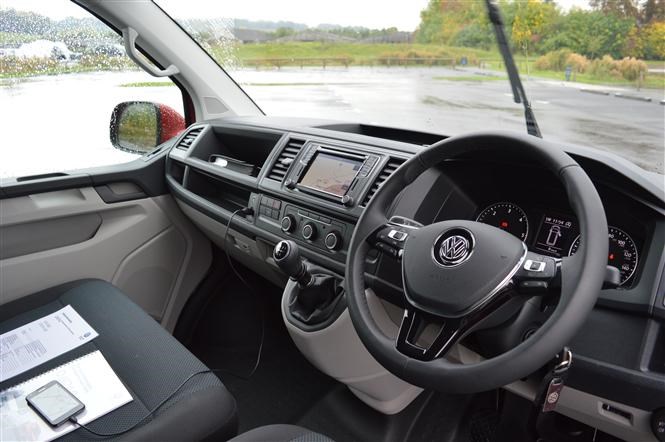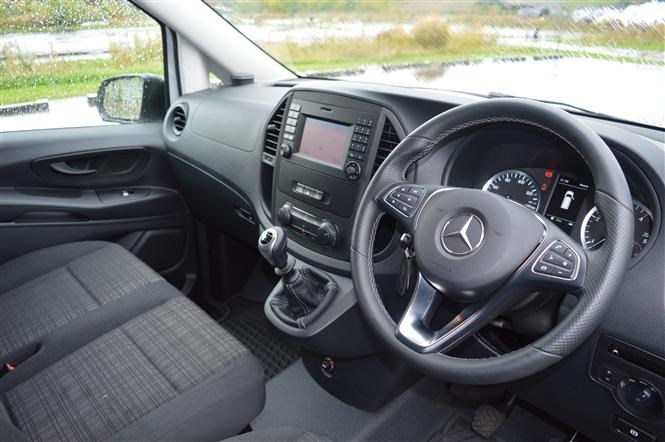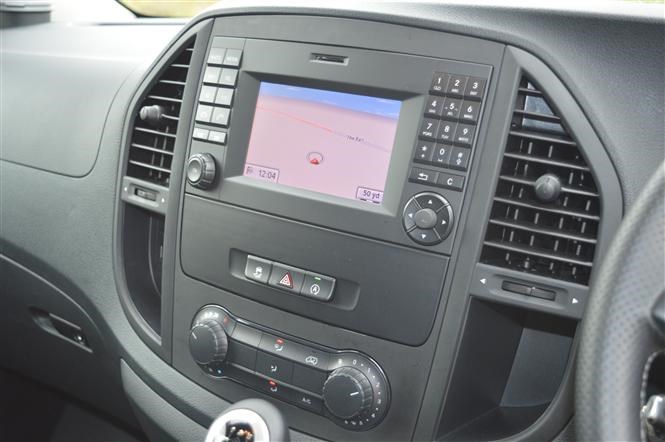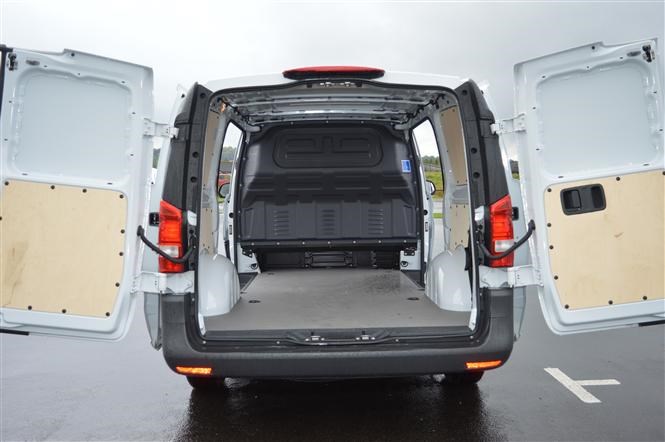If you are a medium van operator, and you want to arrive in style, there are two premium vans that stick out from the crowd: Mercedes-Benz Vito and Volkswagen Transporter. Both have recently experienced major overhauls, so time for a head-to-head test in the UK. Read on to find out which vehicle deserves the crown of the ‘Best Premium Medium Panel Van’.
The comparison relates to the:
- Mercedes-Benz Vito 114CDi Long
- Volkswagen Transporter T30 2.0TDi 140 Long Low Roof

Also read: Ford Transit versus Mercedes-Benz Sprinter
Also read: Ford Transit Connect versus Volkswagen Caddy
Also read: Ford Transit Custom versus Vauxhall Vivaro
In the cab


You can see straight away that both cabs could not be more dissimilar. The Transporter has a far more elevated seating position, while the cab is spacious thanks to a lower sitting dashboard. The high dashboard and low seating position of the Vito hampers driver visibility.
Climbing into the driver’s seat, it’s obvious that more thought has gone into the Transporter cab than the Vito. There are small, convenient storage spaces for the likes of keys, wallets and phones, the two stalks behind the steering wheel are on opposite sides (they’re positioned on the same side on the Vito) and there are two 12v sockets.
The Vito’s ignition is also positioned on the left hand side of the steering, which is incredibly difficult to insert and turn due to it being obscured by the cruise control lever.


In terms of infotainment, the Transporter receives a DAB radio with steering mounted controls, a five-inch touchscreen display and USB, SD, Bluetooth and auxiliary inputs. The screen on the Vito isn’t touchscreen but it is slightly larger (5.8-inch) and there is an iPod port.
Cruise control only becomes standard on the Transporter at Trendline level, while it is standard on the Vito. Both vehicles have a multifunction display within the instrument panel and a trip computer as standard.
Winner: Volkswagen Transporter T6
On the road


The Mercedes-Benz Vito is powered by the long-running 2.1-litre diesel, while the Volkswagen Transporter uses the versatile 2-litre TDi-unit. Both engines are coupled to a six-speed transmission although the Vito has rear wheel drive and the Transporter is front wheel drive.
Both vehicles fare well in terms of driving impressions, although it was the Silver Star that came out on top. The Transporter had the most responsive steering and offered better visibility, but it wasn’t as well refined and vibrations and bumps from potholes in the road were more noticeable. There was very little body roll from either vehicle but the Vito provided more feedback.
Despite there not much difference between the two outputs (139bhp and 340Nm on the Transporter and 136bhp and 330Nm on the Vito), the Transporter has a wider spread of torque, which means power is more readily available. Engine noise, however, was more noticeable on the Transporter.
Winner: Mercedes-Benz Vito
Load Area

The long wheelbase Vito (three wheelbases and one roof height) and the long wheelbase, low roof Transporter (two wheelbases and three roof heights) are mid-size derivatives and equate to load volumes of 6.3 and 6.7 cubic metres respectively.


Access to the cargo area is far easier on the Transporter with a wider rear and side aperatures compared to the Vito, although it has two side loading doors compared to the Transporter’s single one. There is half-height wood panelling, but no floor protection, on the Transporter, while the Vito receives a half-height side panelling and a slip-resistant floor.
In terms of weights, however, very little separates the two. The T30 (3t GVW) is one of four nominal gross weights on the Transporter (2.6t-3.2t), whereas the 3.05t is one of three on the Vito (2.8t-3.2t). Payload is rated at 1,088kg on the Transporter and 1,150kg as the kerb weights are generally lower on the Vito.
Winner: Tie
Running Costs


An increasingly important aspect of commercial vehicles is the cost of ownership. The Mercedes-Benz Vito 114CDI Long retails at £20,860, while the Volkswagen Transporter Trendline Long Wheelbase is priced at £23,155 (both are subject to VAT).
Fuel economy is just less than 10 percent better on the Mercedes-Benz Vito, at 44.1mpg combined, compared with 40.4mpg for the Volkswagen Transporter. Parts are also cheaper on the Mercedes-Benz Vito.
The Vito is backed by the renowned Mercedes-Benz Commercial Vehicle dealer network, which offers unrivalled aftersales support, while the also well-respected Volkswagen Van Centres are fewer and have more limited opening hours.
However, traditionally, the Volkswagen Transporter benefits from better build quality and has better residual values as a result. In the 2014 Van Reliability Survey, the Volkswagen Transporter came in second position, and the Mercedes-Benz Vito in fourth.
Summary

Whereas this would have traditionally been an easy battle for the Volkswagen Transporter, the rapid gains made in the latest phase of the Mercedes-Benz Vito means that, for the first time, this is a really close contest.
The two vehicles have their own strengths. There are many areas, like the cab layout, visibility, the infotainment system, reliability and load area, where the Volkswagen Transporter comes out on top, so would really suit city courier work. The low list price, lower running costs, better refinement and better payload mark out the Mercedes-Benz Vito as superior, and it would turn its hand well to shifting heavier loads over longer distances. So which is best depends on what you need your van for.
Overall winner: Tie
For all the latest van and pickup head to heads, follow @maxximum_load on Twitter.
Just so you know, we may receive a commission or other compensation from the links on this website - read why you should trust us.




